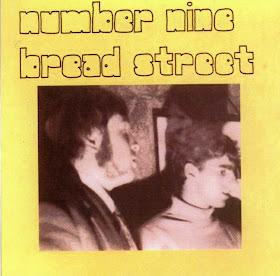 Producer's Note - by Hal Willner.
Producer's Note - by Hal Willner."Monk's Mood" according to Steve Lacy, was originally titled "That's the Way I feel Now". So, instead of trying to come up with something as clever at the time, we made it the working title for this album. Somehow it stuck; and somehow it seems appropriate.
The idea for the album came soon after Monk passed away in 1982. At all the tribute concerts I attended, only musicians from the jazz world were represented. It didn't seem quite right. Though Monk's music is categorized as jazz, it transcends the limitations of categories. I kept thinking about how far Monk's influence has ranged. For example, when NRBQ performs, rarely does a set go by without the band playing at least one Monk composition. Donald Fagen salutes Monk in almost every interview he gives. So why were these artists and others who loved Monk's music not invited to pay their respects? Surely an oversight rather than a slight. With this in mind I decided to produce an album of Monk's compositions with performers from various musical genres.
First I contacted Terry Adams, of NRBQ, and Donald Fagen. Both immediately sparked to the idea. Then I discussed the project with Carla Bley and Steve Lacy. They were very supportive and enthusiastically agreed to take part. A week later, Joe Jackson expressed interest. Thanks to Mediasound Studio's belief in the project (as well as some trusting musicians), a few sessions were recorded even before there was a deal. Then A&M Records picked up the project, and a few months later it was finished.
In retrospect, some incredible things happened during the sessions. At Joe Jackson's "'Round Midnight" session (which was recorded with all seventeen musicians playing live), Ken McIntyre's and Bob Cranshaw's enthusiasm was really something to witness. They were truly touched by Joe's love for Monk. When I played the Chris Spedding/Peter Frampton version of "Work" for Steve Lacy, he asked to hear it again. As we listened, a smile appeared on Lacy's face; he was very impressed that they actually played the song right - something he claimed he didn't do on his earlier recording of it.
The last session to be recorded was Barry Harris' version of "Pannonica," and Barry brought along the Baroness Nica de Koenigswater, for whom it was written. The feeling in that studio from both of them was an unbelievable way to end the recording of the album. I thank them both.
Throughout the making of this album I sensed a great feeling of mutual respect between the jazz and rock musicians. All of the artists were encouraged to record their pieces as they would for their own albums. Everyone was supportive of one another and the different styles worked together because the love for Monk's music was ever present.
I want to thank everyone who participated in the making of the album; I hope they're pleased with the result. Thanks to John Telfer for helping to make it happen. And to Jeff Gold and Gil Freisen at A&M for their enthusiasm. Special thanks to Karen White for helping in such an enormous way at the beginning - without her this album would not exist at this time.
Thanks to the owners and staff of Mediasound. And to Doug Epstein - I hope this is the first of many projects we do together.
Thanks to the Masked Announcer for the thunder. And special thanks to Steve Lacy for his enormous contribution to the record - he kind of ended up being the narrator. And finally to Thelonious Monk, for all he did to change the way many of us feel now. I hope he approves.
Tracks :
* Thelonious, Bruce Fowler & Phil Teele - tmbs, Tom Fowler - bass, Chester Thompson - drums.
* Little Rootie Tootie, NRBQ and the Whole Wheat Horns
* Reflections, Steve Kahn - guitars & Donald Fagen - synthesizers.
* Blue Monk, Dr John - piano
* Misterioso, The Carla Bley Band with special guest Johnny Griffin.
* Pannonica, Barry Harris - tack piano.
* Ba-lue-Bolivar-Ba-lues-are, Was (Not Was)
* Brilliant Corners, Mark Bingham, Brenden Harkein & John Scofield - guitars, Steve Swallow - bass, Joey Barron - drums.
* Ask Me Now, Steve Lacy - soprano, Charlie Rouse - tenor.
* Monk's Mood, Sharon Freeman - french horn.
* Four In One, Todd Rundgren - synthesizers, keyboards, guitar & drum machines; Gary Windo - alto.
* Functional, Randy Weston.
* Evidence, Steve Lacy - soprano, and Elvin Jones - drums.
* Shuffle Boil, John Zorn - game calls, alto and clarinets, Arti Lindsay - guitar & vocal, Wayne Horvitz - piano, organ, celeste & electronics, M E Miller - drums.
* In Walked Bud, Terry Adams & Friends. Terry Adams - piano, Roswell Rudd - trombone, Pat Patrick - alto, John Ore - bass, Frankie Dunlop - drums.
* Criss Cross, Shockabilly: Eugene Chadbourne - guitar, Mark Kramer - keyboards etc., David Licht - drums. (not on cassette)
* Jackie-ing, same personnel as Brilliant Corners plus David Buck - trumpet, Don Davis - clarinet, Mars Williams - clarinet & tenor, Ralph Carney - bass sax & whistle.
* 'Round Midnight, Joe Jackson - piano, and strings.
* Friday the Thirteenth, Bobby McFerrin & Bob Dorough - vocals, Dave Samuels - vibes, marimba & percussion.
* Work, Chris Spedding & Peter Frampton.
* Gallop's Gallop, Steve Lacy - soprano.
* Bye-Ya, Steve Slagle - alto, Dr John - piano, Steve Swallow - bass, Ed Blackwell - drums.
* Bemsha Swing, Steve Lacy - soprano, Gil Evans - electric and acoustic pianos.
Link : @
No artwork





















